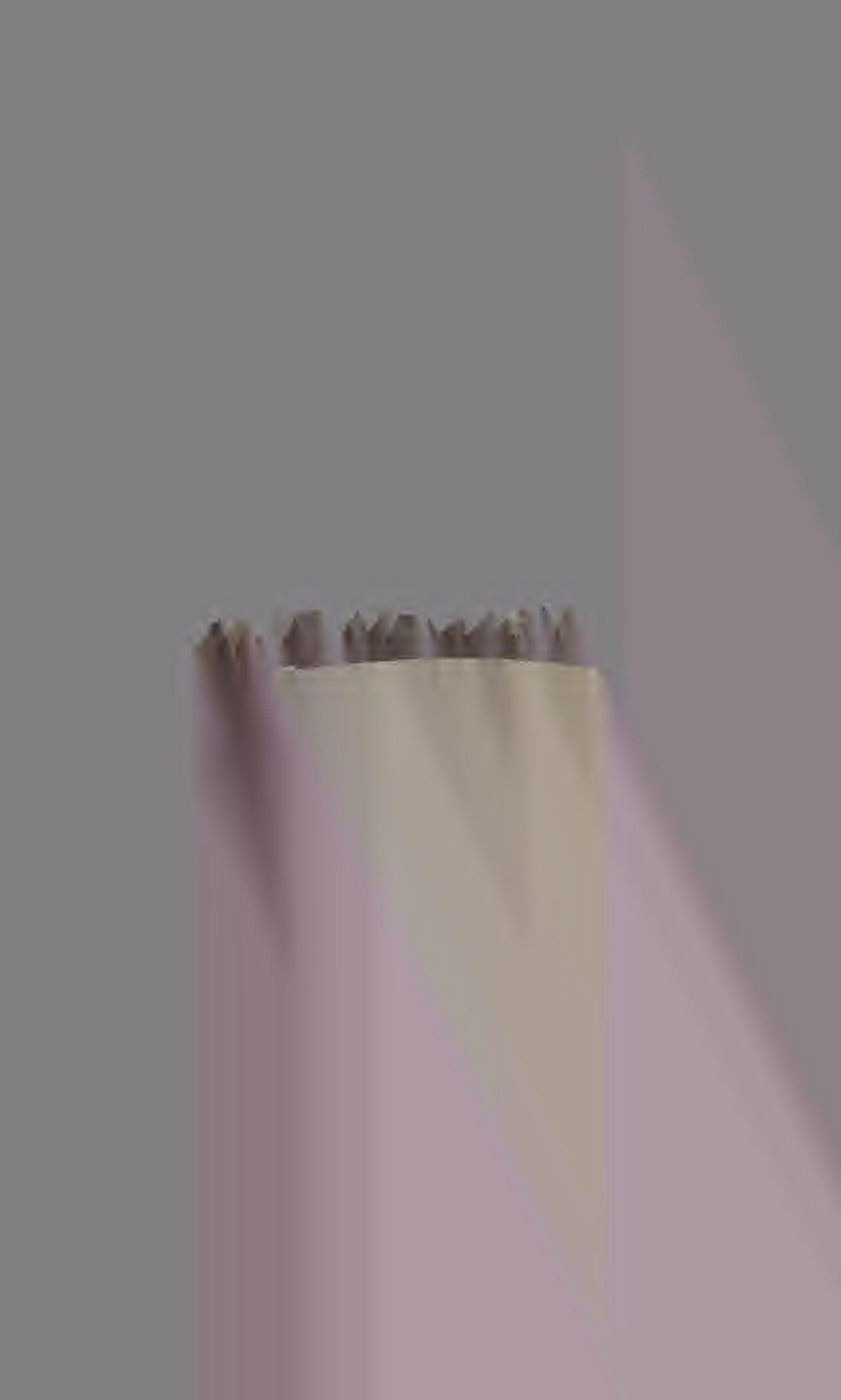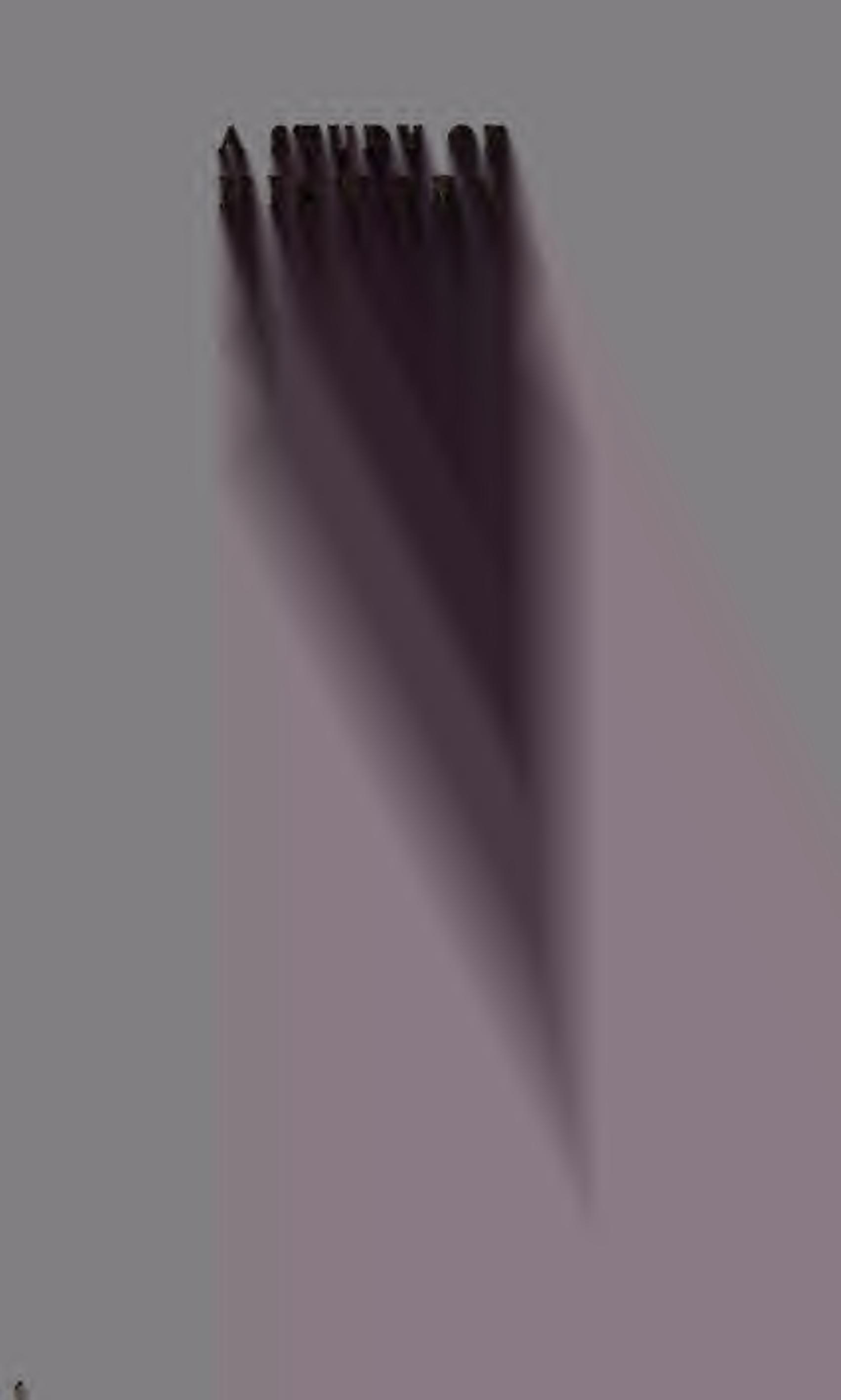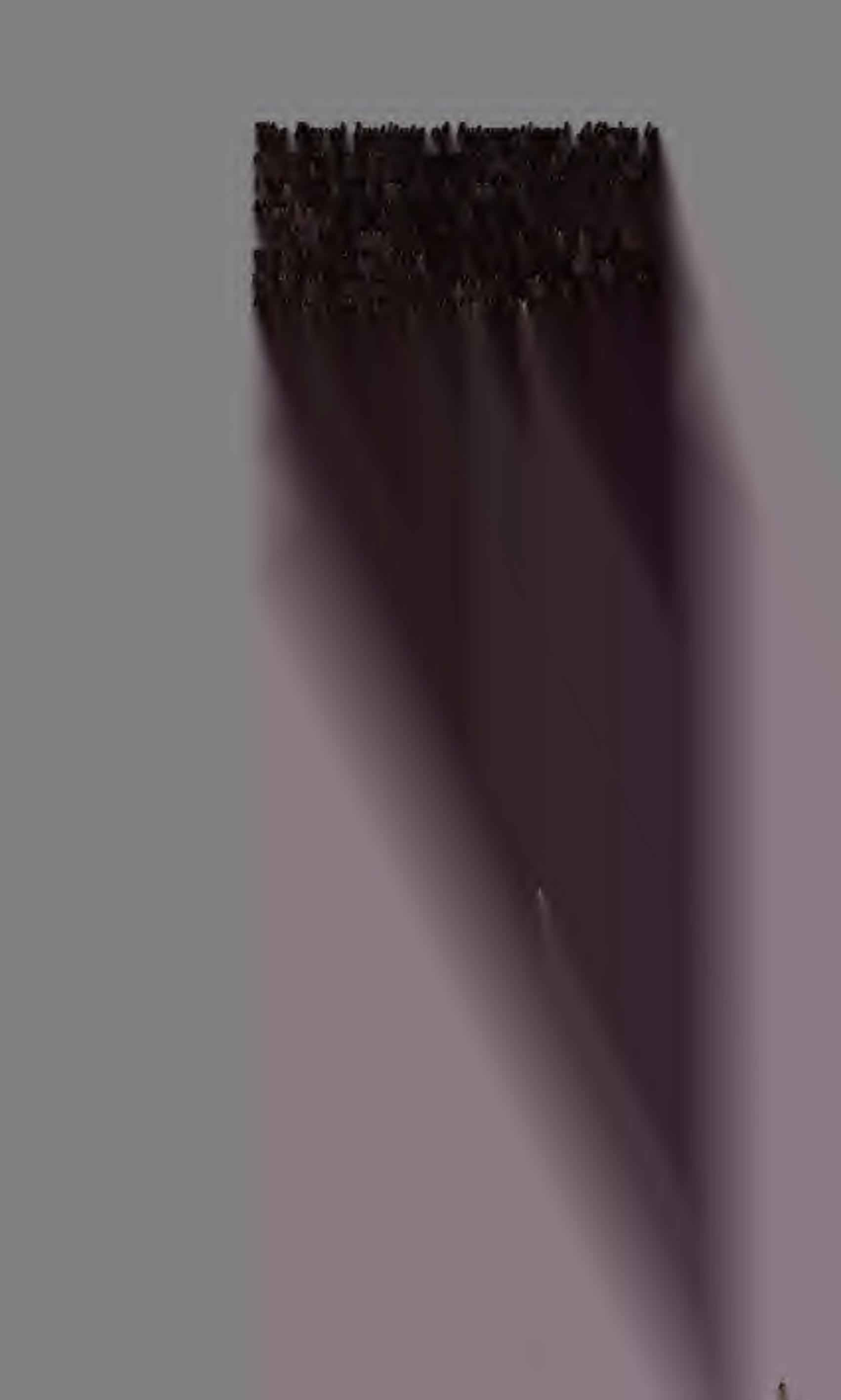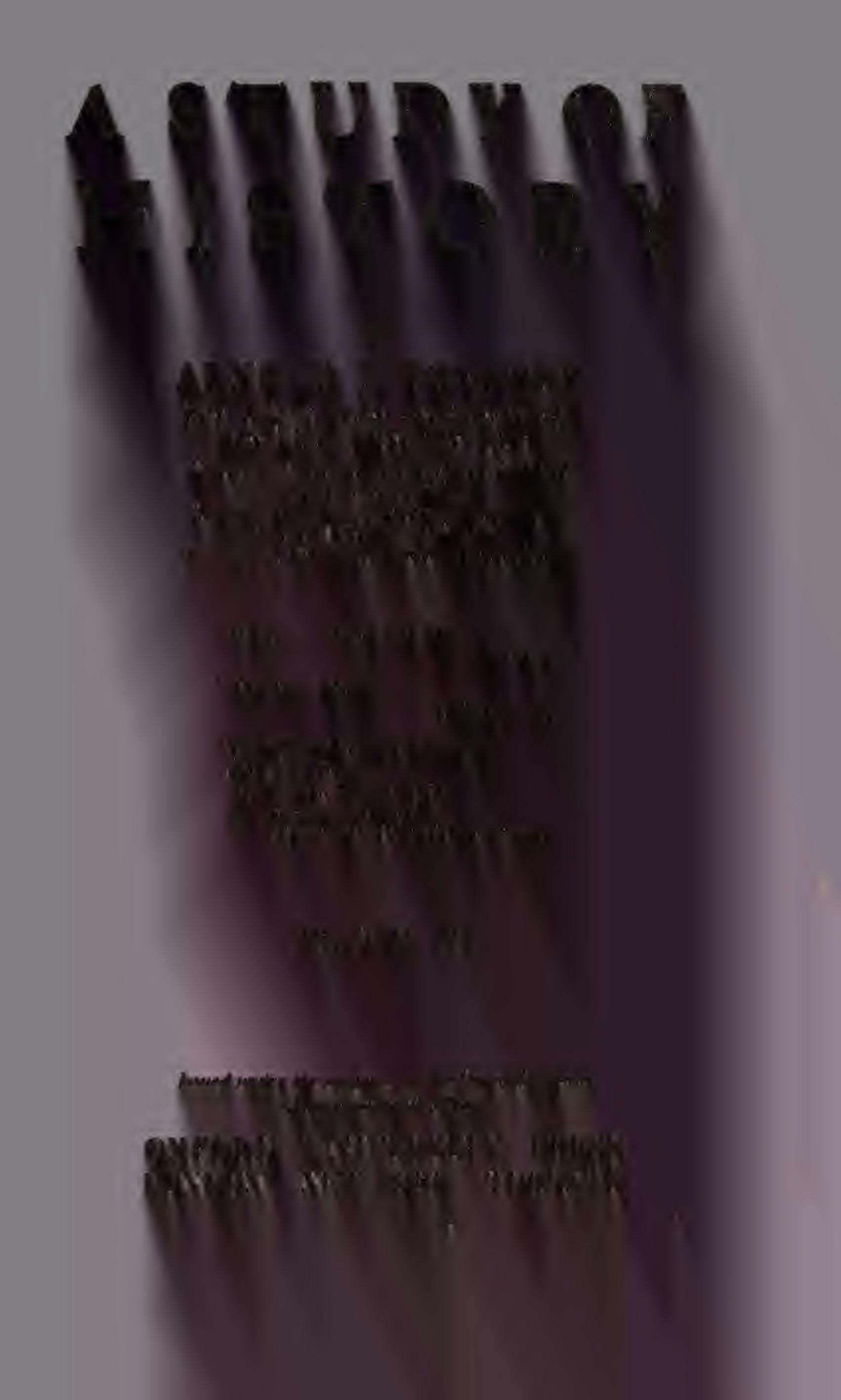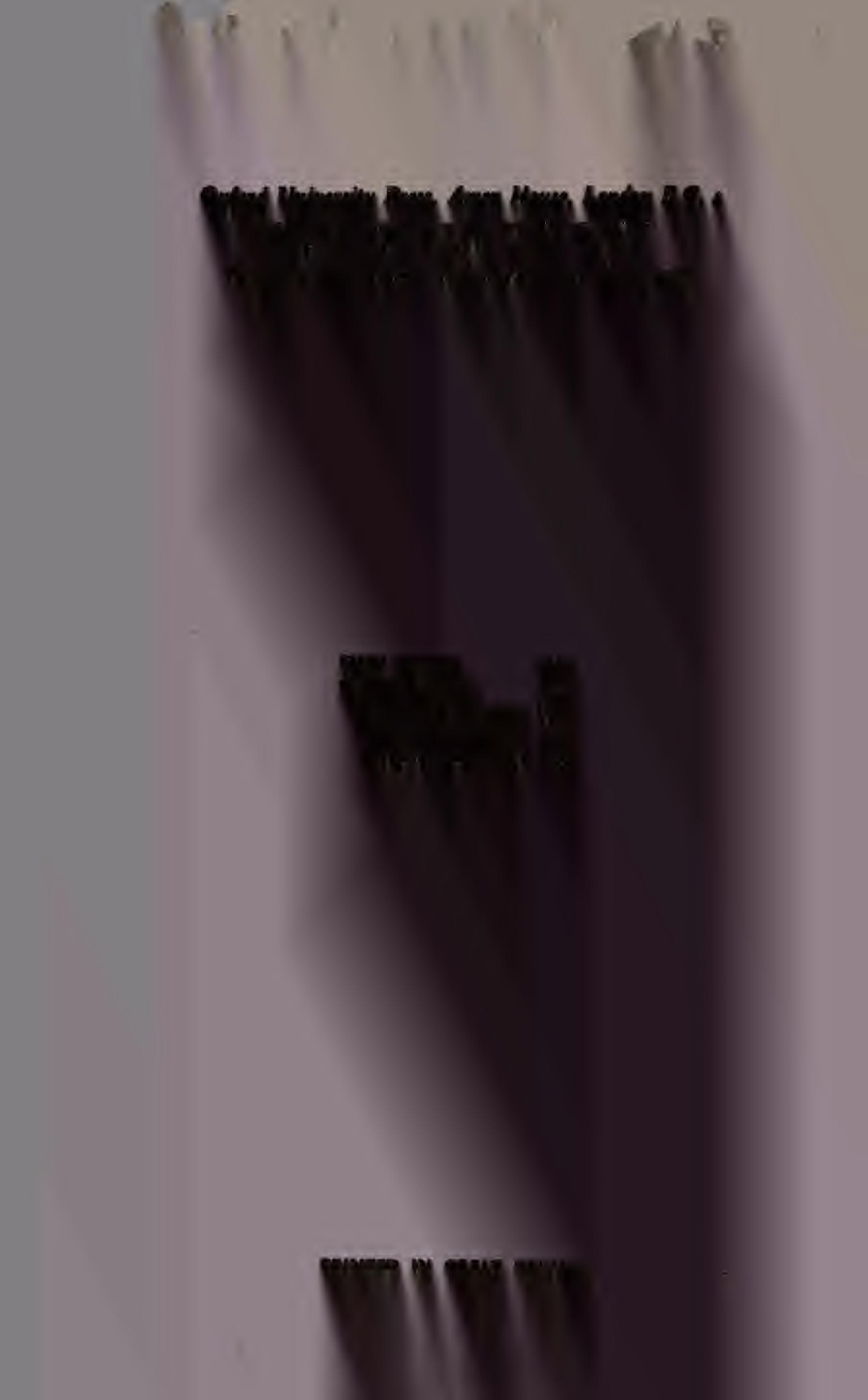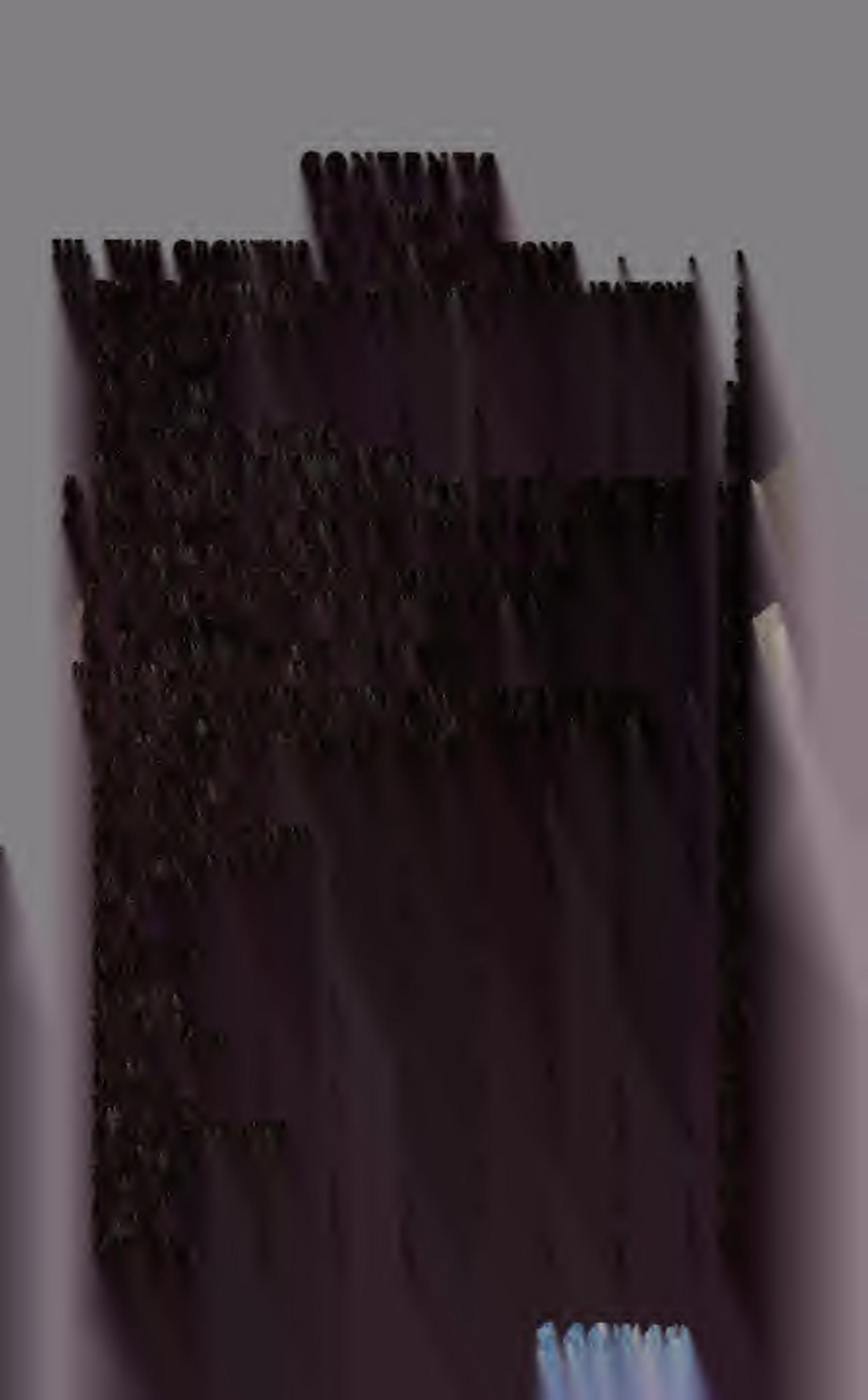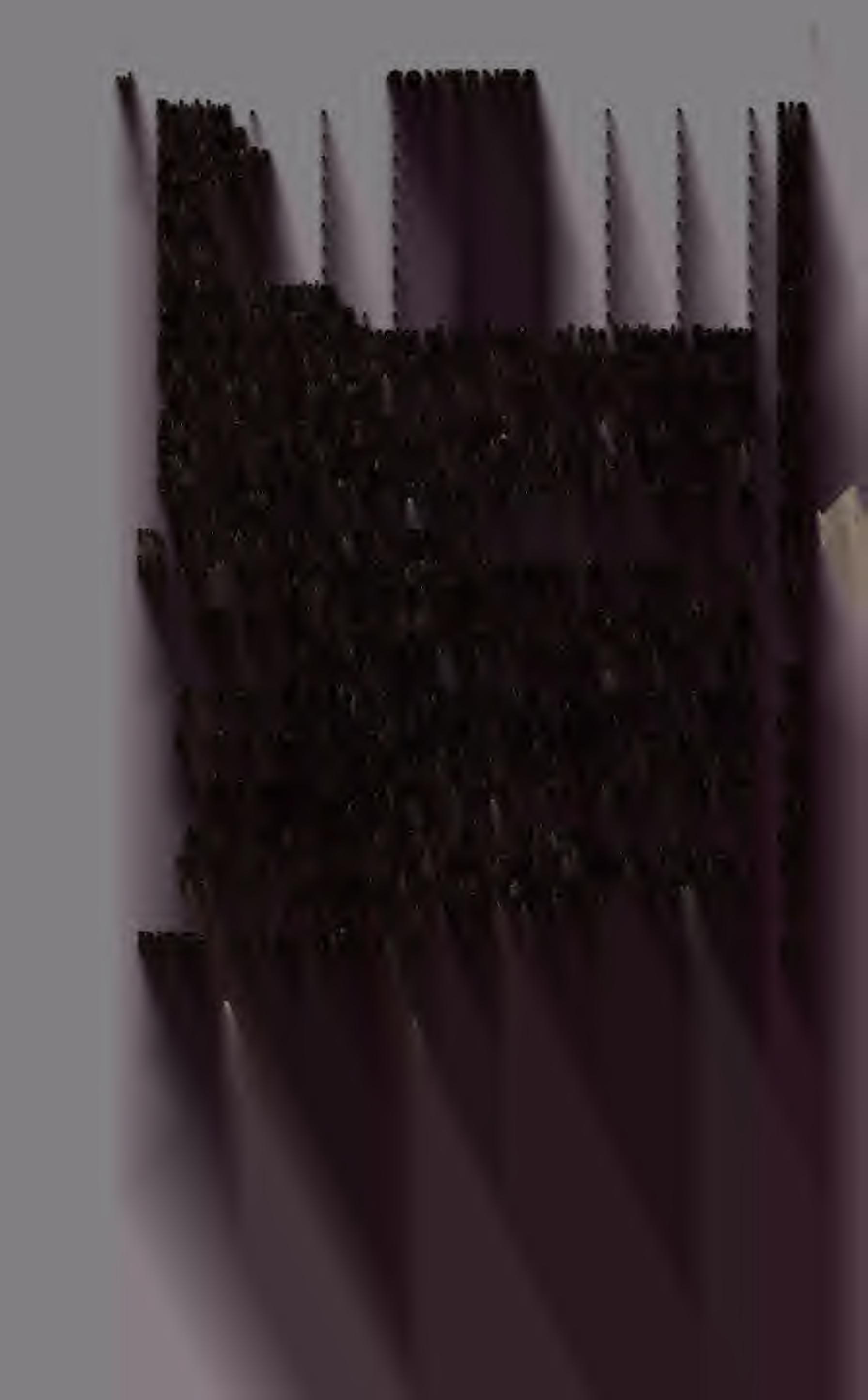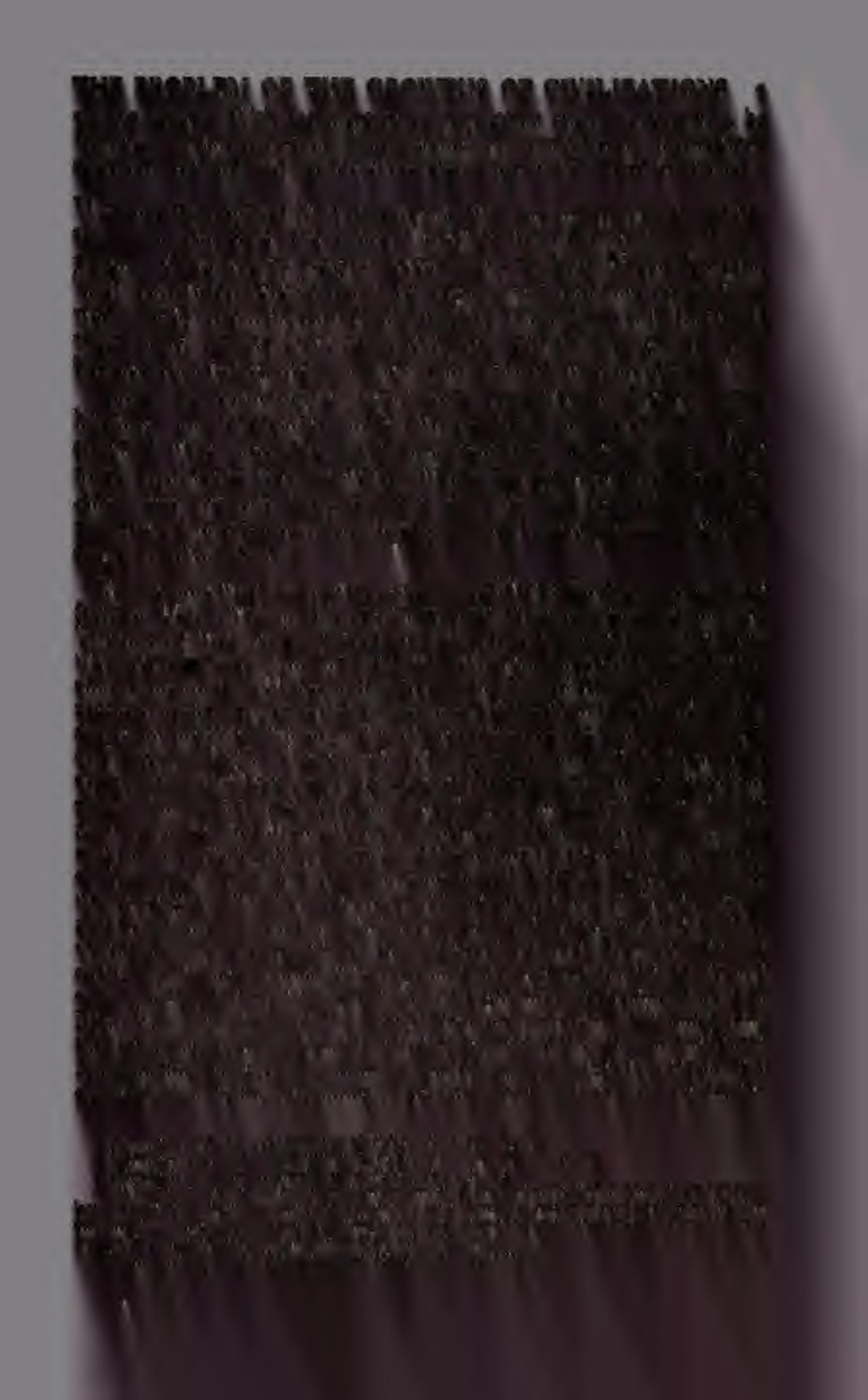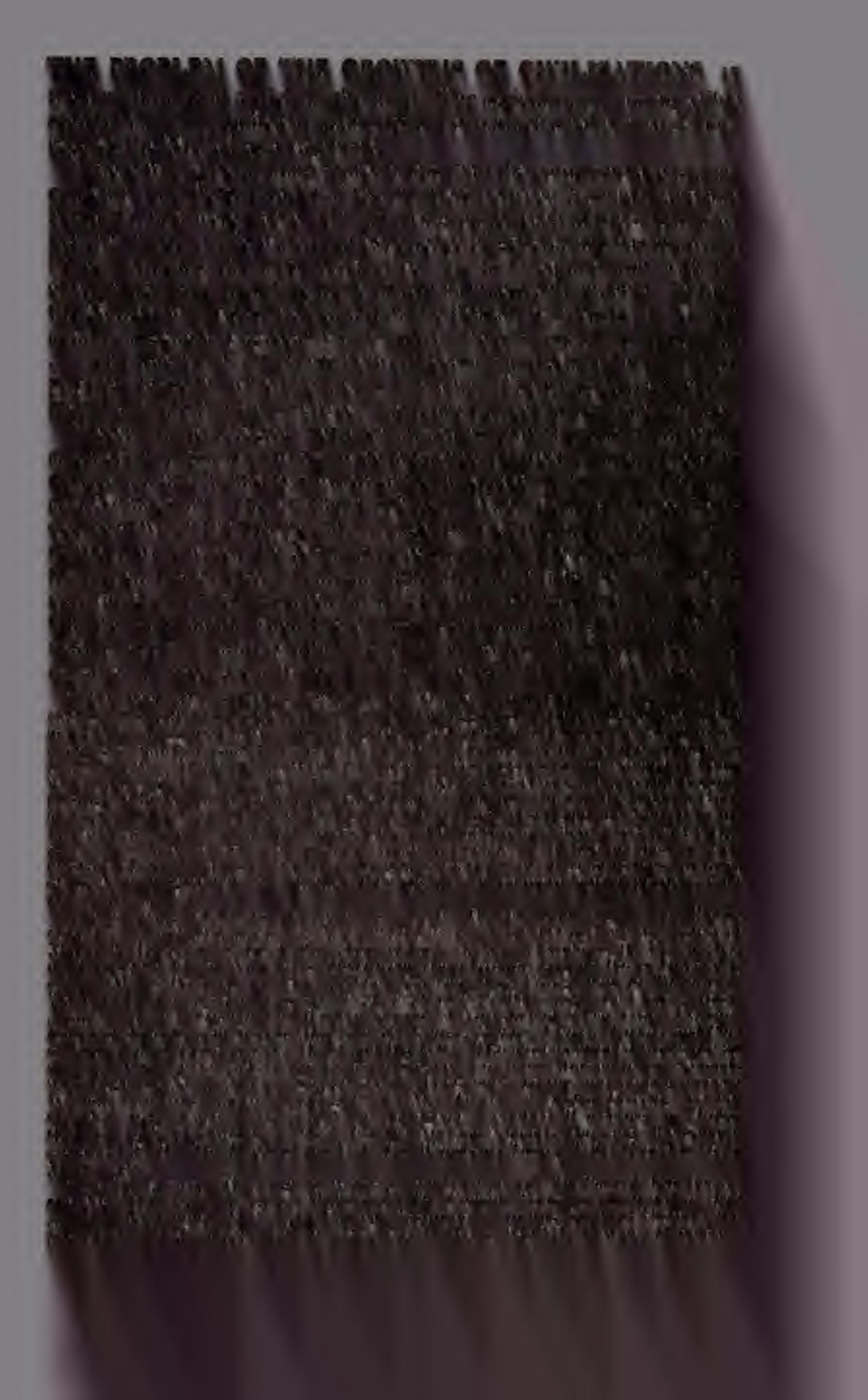THE GROWTHS OF CIVILIZATIONS
A. THE PROBLEM OF THE GROWTHS OF CIVILIZATIONS
The Arrested Civilizations
IN giving this chapter its title, are we not begging a question?
And, if the question is raised, can we really maintain that the growths of civilizations present a problem at all ? The problem of the geneses of civilizations is another matter. That problem is genuine beyond all doubt; and our attempts to solve it have exer¬ cised our minds severely. But if we may venture to suppose that these efforts have had any substantial measure of success, do we need to seek further? For does not any solution of the problem of birth dispose of the problem of growth apriori} When birth is once achieved, does not growth follow ofitself? This is a question which has to be answered if our title is to stand. Let us turn, for an answer, to the empirical method of inquiry which has often stood us in good stead.
If we take a survey of civilizations that have duly come to birth— in contrast to those embryonic civilizations that have miscarried— do we find, as a matter of fact, that they have invariably grown thereafter in wisdom and in stature ? Frequently—perhaps usually —they have gone on growing, no doubt. Our twenty-one speci¬ mens of this species of societies are cases in point. For although, in our day, all but seven of the twenty-one are extinct, and although the majority of these seven are now unmistakably in decay, it is evident, on the other hand, that even the shortest-lived and least successful of these twenty-one societies did achieve at least some measure of growth after it had come to birth. But the twenty-one developed civilizations1 and the four abortive civilizations2 are not the only examples of civilizations that an empirical survey reveals to us. If we now look further, we shall come across specimens of yet a third class. We shall find examples of civilizations which have not been abortive yet have not developed either, but have been arrested after birth. It is the existence of these arrested civilizations that justifies the title of the present chapter by presenting the problem which we have now set ourselves to solve. The first step
* See the list in vol. i, on p. 133, above.
2 The Abortive Far Western Christian, Abortive Far Eastern Christian, Abortive Scandinavian, and Abortive Syriac. (See II. D (vii), vol. ii, pp. 322-Q4, above.)
towards solving it will be to collect as many specimens of arrested civilizations as we can.
We can readily lay hands on half a dozen specimens of the kind. Among the civilizations that have come to birth in response to physical challenges, there are the Polynesians and the Esquimaux and the Nomads. And, among the civilizations that have come to birth in response to human challenges, there are certain peculiar communities, like the 'Osmanlis in the Orthodox Christian World or the Spartans in the Hellenic World, which have been called into existence by local accentuations of the prevalent human challenges when these have been keyed up, through peculiar circumstances, to pitches of unusual severity. These are all of them examples of arrested civilizations; and we can see at once that they all present a picture of the same general predicament.
All these arrested civilizations alike have been immobilized in consequence of having attempted, and achieved, a tour de force. They are responses to challenges of an order of severity on the very borderline between a degree that still affords some stimulus and a degree that brings into operation the law of diminishing returns.1
In the imagery of our fable ofthe climbers’ pitch,2 the representa¬ tives of the arrested civilizations are like climbers who happen to have started to scale the precipice in places where they are brought up short, at an early stage, against beetling projections on the face of the cliff. In these circumstances, a timid or a clumsy climber might have lost his hold and fallen, while a more prudent or a less obstinate climber might have redescended to the ledge from which he had just taken off, in order to try his fortune again at another point, or else to rest, unambitiously, from his labours. These actual climbers, however, have been neither defeated, nor daunted, nor inspired with that wisdom which is the better part of valour, by the unexpected and formidable obstacles that they have encountered. Theyhave acceptedtheir challenge astheyhavefound it, graspedthe projecting rock, and levered themselves over it, outwards and up¬ wards, with a movement of magnificent audacity and vigour and skill. But though the gesture is magnificent, it is notgood climbing; for it entails a consequence which the expert climber is ever on the look out to foresee and to avoid. The expert climber is on his guard against making any move that will preclude him from moving on; and our over-audacious climbers cannot break this rule with impunity. They grapple with the jutting crag, only to find them-
1 In concrete terms, they are responses to challenges of an intermediate degree of severity between the challenge that stimulated the Achaeans to create the Hellenic Civilization and the challenges which were just too severe to allow the Irish and the Norsemen to bring the Abortive Far Western Christian and the Abortive Scandinavian Civilization to birth.
2 See II. B, vol. i, pp. 192-5, above.
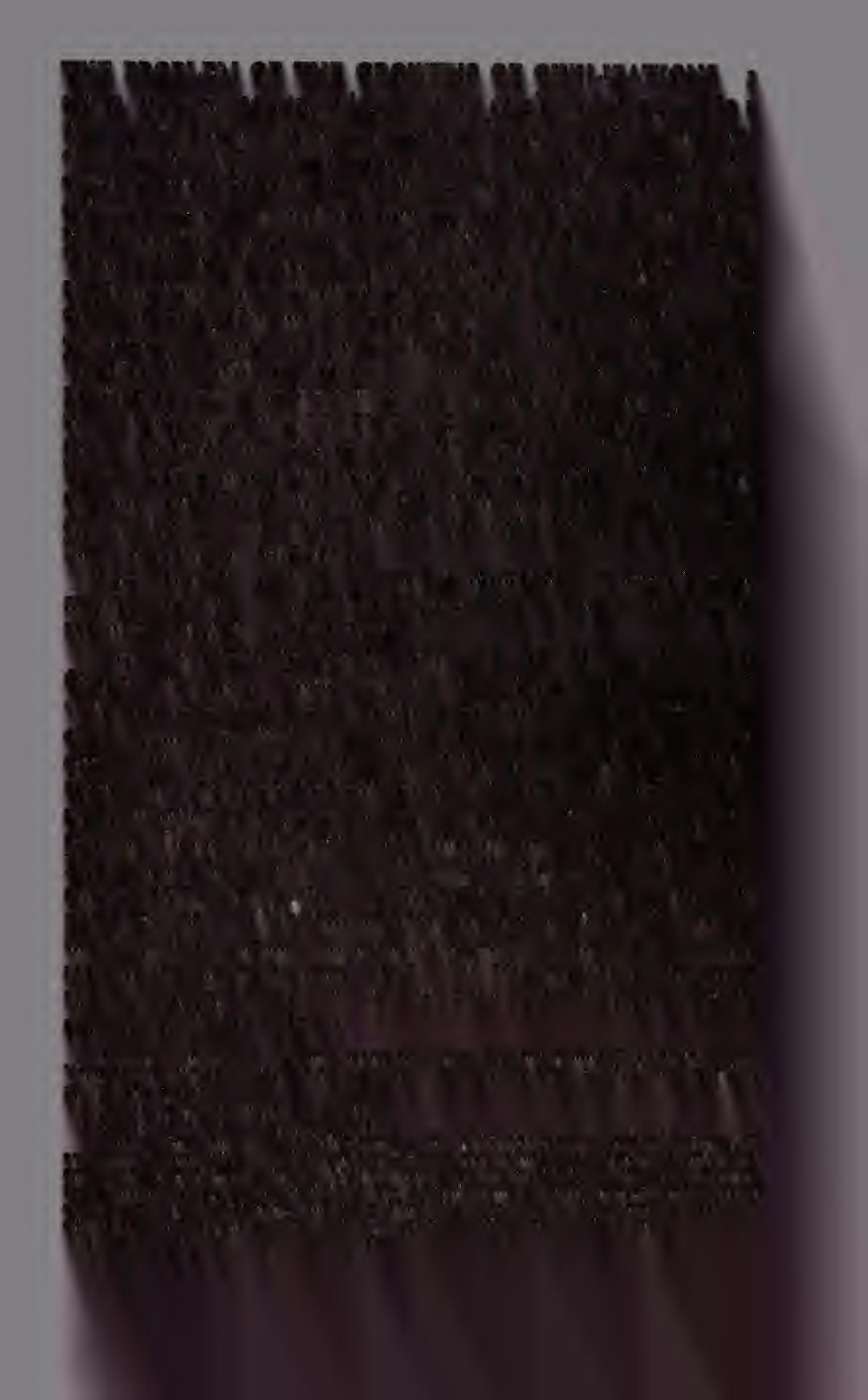
PROBLEM OF THE GROWTHS OF CIVILIZATIONS 3 selves, the next moment, clinging to the crag’s projecting face in a rigid posture from which they dare not budge. Their superabun¬ dant skill and vigour and boldness is now all absorbed in a supreme effort to save themselves from falling, and they have no purchase, and no margin of energy, for climbing on until they have rounded the formidable projection and reached a normal surface again. Their motto—and eventual epitaph—is ‘J’y suis, j’y reste’. They are performing an astonishing acrobatic feat, but a feat in the realm of Statics and not in the realm of Dynamics. In fact, these arrested civilizations, unlike the primitive societies, are real instances of ‘peoples that have no history’.1 Immobility is their unalterable posture, so long as they are what they are. They become what they are by grappling with the projecting crag; they remain what they are by gripping the crag so close that their once free and supple bodies mould themselves stiffly into all the contours of the rock; and they cease to be what they are when they either turn to stone and merge into the crag to which they have clung, or else drop, like a stone, from exhaustion.
This common posture of perilous immobility at high tension may be observed, in the several examples that we have cited, under the widest variety of conditions.
The Polynesians, for instance, ventured upon the tour deforce of Oceanic voyaging. Their skill was to perform these stupendous voyages in frail open canoes. Their penalty has beento remainin an exact equilibrium with the Pacific—just able to cross its vast empty spaces, but never able to cross them with any margin of security or ease—until the intolerable tension has found its own relief by going slack, with the consequence that these former peers of the Minoans and the Vikings have degenerated into incarnations of the LotusEaters2 and the Doasyoulikes :3 loosing their grip upon the Ocean and resigning themselves to be marooned, each in his own insular paradise, until the Western mariner comes at last from the ends of the Earth to exterminatethem as he exterminates theArctic hunters’ seals or the prairie hunters’ bison.4 We need not dwell here upon the Polynesians’ latter end, since we have touched upon it already apropos of Easter Island.5
1 For the unrecorded, but not unenacted, history of the primitive societies, in the Yang-activity which must have preceded their present Yin-state, see I. C (iii) (e), vol. i, pp. 179-80, above.
2 See II. D (i), vol. ii, pp. 22-3, above.
3 See II. D (i), vol. ii, pp. 25-31, above.
4 The decimation of the Polynesians by the Western ‘beach-combers’ has not, of course, been deliberate; yet the bullet and the harpoon which have done such execution among the non-human fauna of North America are not so deadly to Primitive Man as the germs of contagious diseases which the Westerner involuntarily brings—not to speak of the profound devitalizing influence which the Westerner’s very spiritual presence exerts upon the Primitive who suddenly comes into social contact with him.
5 See II. D (i), vol. ii, pp. 12-15, above.
THE PROBLEM OF THE GROWTHS OF CIVILIZATIONS
The Esquimaux
As for the Esquimaux, ‘the Palaeeskimo Culture was an original North Indian form of culture, the winter side of which had become specially and strongly developed by adaptation to the winter ice of the Arctic Ocean.1 The essential impulse to the development of the Eskimo Culture did not come until the Eskimo accustomed themselves to stay at or on the sea ice in the winter and hunt seals.’2 This was the Esquimaux’s tour de force; and the stimulus which excited them to achieve it seems, on the whole, more likely to have been the attraction of economic advantage than the pressure of human aggressors.
‘It might be asked whether the pre-Eskimo advance towards the north, to the Tundra and the Archipelago, took place voluntarily or was due to pressure from southern neighbours. One will probably never be able to decide the question. But... it is to be strongly emphasized that life at the Arctic sea-coast, far from indicating a step backwards, in reality indicated a step forwards as regards economy, inasmuch as, in addition to the hunting of terrestrial mammals and summer fishing in the fresh waters, which was already known, the practice of hunting aquatic mam¬ mals was acquired as compensation for the ice fishing on lakes and streams. The contrast between this fishing on the ice of lakes, which was only resorted to in times of need, and the sea ice hunting of seals, gives a kind of standard of progress. One can then very well imagine that no pressure has been necessary, but that the pre-Eskimo have been tempted on to the coasts of the Arctic Ocean by natural conditions.’3
Whatever the historical incentive may have been, it is evident that, at some point in their history, the forefathers of the Esqui¬ mauxgrappled audaciouslywiththeArctic environment and adapted their life to its exigencies with consummate skill.
‘It is [the] natural conditions in the [Arctic] Archipelago, or, to put it more exactly, in the coast and sea regions between the mainland and the islands, which have been able to force a slow hunting people such as the ancient Eskimo must have been to undertake so thorough a cultural change as that which the modification of the Eskimo Culture must necessarily have required.’4
The skill evoked in the Esquimaux by this formidable problem of adaptation isjustly celebrated. ‘As regards certain dexterities, they really furnish an example of the utmost effort of human ability’ ;5 and, to prove the point, it is only necessary to recite the catalogue
1 Steensby, H. P.: An Anthropological Study of the Origin of the Eskimo Culture Saertryk af Meddelelser om Granland Liii (Copenhagen 1916, Lunos), p. 186.
2 Steensby, op. cit., p. 205.
3 Steensby, op. cit., p. 206.
4 Steensby, op. cit., p. 168. For the evolution of the Esquimaux’s most characteristic piece of technical apparatus, the kayak or sealskin canoe, from the North American Indian birch-bark canoe, see auct. cit., op. cit., p. 162.
5 Steensby, op. cit., p. 41.
of the material appliances which the Esquimaux have elaborated or invented: ‘kayak, umiak (women’s boat), harpoon, and bird-dart with throwing board, the three-pronged salmon spear, the com¬ pound bow, strengthened by a backing of sinews, the dog sledge, the snow shoe, the winter house and snow house with the lamps for burning blubber oil, and the platform, the summer tent, and lastly the skin garments.’1
These are the outward and visible signs of an amazing feat of wit and will; yet ‘in certain directions, for instance as regards social organization, the Eskimo display somewhat inferior development. But it is a question whether this inferior social differentiation is due to primitiveness, or whether it is not rather a result of the natural conditions under which the Eskimo have lived from time immemorial. No deep knowledge of the Eskimo Culture is needed to see that it is a culture which has been obliged to employ an immensely large part of its force simply to develop the means wherewith to gain a livelihood.’2
The penalty which the Esquimaux have had to pay for their audacity in grappling with the Arctic environment and compelling it to yield up its latent economic riches, has been the rigid con¬ formation of their life to the annual cycle of the Arctic climate. ‘All the bread-winners of the tribe are obliged to carry on different occupations at the different seasons of the year’ ;3 and the tyranny of Arctic Nature imposes almost as exacting a time-table upon the Arctic hunter as is imposed on any factory worker of the temperate zone by the human tyranny of ‘scientific management’.4 A dis¬ tinguished student of the Eskimo Culture has made out this time¬ table, in two local variants, as follows :s
Arctic Eskimo Culture.
Season. Place of Abode. Occupation. Principal Implements. Dwelling.
Winter In the beginning of winter, the coast land; later in the winter, the sea ice.
Summer Inland.
Hunting on the sea ice. Dog sledge, Har¬ poon. In the beginning of winter, earth house; later in the winter, snow house.
Hunting on land and fishing in rivers.
Kayak, Lance, Bow and Arrow, Salmon Spear.
Tent.
1 Steensby, op. cit., p. 43. For a systematic and detailed survey of the ingenuities by which the Esquimaux have adapted their life to their physical environment, see Weyer Jr., E. M.: The Eskimos: Their Environment and Folkways (New Haven 1932, Yale Uni¬ versity Press), ch. iv.
2 Steensby, op. cit., p. 42.
3 Steensby, op. cit., p. 156,
4 ‘There is hardly another people in the world whose self-maintenance mores are so strictly regulated by the changes in the seasons.’ Weyer, op. cit., p. 79.
s Steensby, op. cit., pp. 157-8. Compare the more elaborate chart in Weyer, op. cit., on pp. 80-2 (fig. 11), which illustrates the author’s account of the ‘Seasonal Life-Cycle of Eskimos’ in ch. v, § 1.
Sub-Arctic Eskimo Culture.
Season. Place of Abode. Occupation. Principal Implements. Dwelling.
Winter The coast. Hunting in Ka¬ yaks.
Summer Inland (otherwise the coast).
Inland hunting, fishing in rivers.
Kayak,Harpoon, Umiak. Earth house.
Kayak, Lance, Salmon Spear, Bow and Arrow. Tent.
Another Western anthropologist, who has lived through this Arctic annual cycle himself by sharing the life of the Esquimaux of Coronation Gulf, has described the sharp transition from one seasonal rhythm to another as he encountered it in his own personal experience.
‘A fortnight’s fishing exhausted the bay and compelled us to make another move. It mattered little which way we turned, for every ridge bounded a lake that contained both trout and salmon. But since the total catch would be greater if we scattered our forces and settled on different lakes, the families separated.
‘This dispersal of the individual families completed one-half of the strange cycle through which the Eskimos passed year after year. They reacted to the seasons, to their constantly changing environment, more than most of the inhabitants of our globe. The problem of obtaining life’s basic needs—food, clothing, and shelter—left little time for other thoughts; and the seals and caribou, that furnished them with food, furnished also the materials for clothing and tents. In winter, when the land lay bare and silent beneath the snow, when the caribouhad migrated south, when the twilight hours were brief and the nights long, the natives had banded together into tribes, and tribe combined with tribe to wrest a precarious livelihood from the frozen sea by united effort. Food had been common to all, and their snow-houses had adjoined each other so closely that the families seemed absorbed in the group. With the return¬ ing sun and lengthening days, Nature had recalled its life;1 the seals had appeared on top of the ice, the caribou had come northward again, and the tribes of Eskimos had broken up into little bands. For a time they had lingered on the ice to hunt more seals; then, turning landward, they had pursued the caribou over the snow-covered hills and plains. Now the snow was vanishing, the caribou had scattered, and fish alone pro¬ vided a sure livelihood untilmidsummer. Somy party, like many another throughout the country, was dividing into its constituent households, each of which now toiled for itself alone. The tribe no longer existed; Society had dissolved into its first element, the family.’2
As we ponder over the scene which is here so vividly depicted,
1 Weyer points out, in op. cit., on pp. 20 and 28-9, that in the Esquimaux’s habitat the transition from winter to summer is abrupt, while the transition from summer to winter is relatively gradual.—A.J.T.
2 Jenness, D.: The People of the Twilight (New York 1928, Macmillan Company), pp. 136-7.
we may be inclined to ask ourselves whether the Esquimaux are the Masters of Arctic Nature or her slaves. We shall meet with an equivalent question, and find it equally difficult to answer, when we come to examine the lives of the Spartans and the 'Osmanlis. Meanwhile, we have still to consider the fate of another arrested civilization which has been evoked by a physical challenge, before we pass on to examine those which human challenges have brought to birth.
The Nomads
The tour deforce of the Esquimaux has been to take up the chal¬ lenge of the Ice and the tour deforce of the Polynesians to take up the challenge of the Ocean. The Nomad, who has taken up the challenge of the Steppe, has had the audacity to grapple with an equally intractable element; and indeed, from the social (as dis¬ tinct from the physiographical) point of view, the Steppe, with its surface of grass and gravel, actually bears a greater resemblance to ‘the unharvested sea’1 than it bears to terra firma that is amenable to hoe or plough. Steppe-surface and water-surface have this in common, that they are both accessible to Man only as a pilgrim and a sojourner. Neither offers him anywhere on its broad expanse (apart from the islands and oases) a place where he can rest the sole of his foot and settle down to a sedentary existence. Both provide strikingly greater facilities for travel and transport than those parts of the Earth’s surface upon which human communities areaccustomedto live inpermanence ;2 but both exact (asthe penalty for trespassing upon them) the necessity of constantly ‘moving on’, or else ‘moving off’ their surface altogether and finding some standing ground upon terra firma somewhere beyond the coasts which respectively surround them. Thus there is a real similarity between the Nomadic horde which annually follows the same orbit of summer and winter pasture-ranges, and the fishing-fleet which cruises from bank to bank according to the season; between the convoy of merchantmen which exchanges the products of the opposite shores of the sea, and the camel-caravan by which the opposite shores of the Steppe are linked with one another; between the water pirate and the desert raider; and between those explosive movements of population which impel Norsemen or Minoans or Crusaders to take to their ships and to break like tidal waves upon the coasts of Europe or the Levant, and those other movements which impel Imoshagh or Arabs or Scyths or Turks or Mongols to
1 ‘Unharvested’ (arpuyeros) is one of the stock epithets of the sea in the Homeric Epic; 2 For the light thrown upon this question of relative ‘conductivity’ by a study of the geographical distribution of languages, see III. A, Annex I, below.
OF THE GROWTHS OF CIVILIZATIONS
swing out of their annual orbit on the Steppe and to break, with equal violence and equal suddenness, upon the settled lands of Egypt or 'Iraq or Russia or India or China.
It will be seen that the Nomads’, like the Polynesians’ and the Esquimaux’s, response to the challenge of Physical Nature is a tour deforce; and in the case of the Nomads the historical incentive to this tour deforce is not, as in the case of the Esquimaux, altogether a matter of conjecture. We are entitled to infer that Nomadism was evoked by the same challenge that evoked the Egyptiac and the Sumeric civilizations and that drove the forefathers of the Shilluk and the Dinka into Equatoria and the forefathers of the Norsemeninto Scandinavia. Nomadism, likewise, maybe conceived as having arisen in response to the searching challenge of desicca¬ tion; and we have touched upon its possible origins already in¬ cidentally, in inquiring into the origins of the fluvial cultures.1 The origins ofthe Nomadic Civilization, as well as those ofthe sedentary civilizations which have arisen in the same aridzone, are illuminated by the discoveries of modern Western Archaeology;2 and the clear¬ est light which we have upon Nomadism, up to date, has been thrown by the researches of the Pumpelly Expedition in the Trans¬ caspian oasis of Anau :3 a site in the extreme south-western corner of the Eurasian Steppe, at the foot of the north-eastern escarpment of the Iranian Plateau.
In the Transcaspian oases, as in the river-valleys of the Lower Tigris and Euphrates and the Lower Nile,4 we find the challenge of desiccation, in its first incidence, stimulating certain communities which had formerly lived entirely by hunting to eke out their liveli¬ hood under less favourable conditions by taking to a rudimentary form of agriculture.
‘With the gradual shrinking in dimensions of habitable areas and the disappearance of herds of wild animals, Man, concentrating on the oases and forced to conquer new means of support, began to utilize the native plants; and from among these he learned to use seeds of different grasses growing on the dry land and in marshes at the mouths of larger streams
1 See II. C (ii) (b) 2, vol. i, pp. 304-5, above.
2 On this point, a cautionary note has been communicated to the writer of this Study by Mr. G. F. Hudson: ‘Nomadism has to be carefully distinguished from the keeping of domestic animals by sedentary folk, and the archaeological evidence only refers to the latter. I think it is very probable that both intensive agriculture and animal-domestica¬ tion began in oases as a result of a process of desiccation, namely the drying-up of North Africa, Arabia, and Iran when the climatic belts shifted north at the end of the Ice Age— though even this is rather conjectural. Nomadism, on the other hand, was a develop¬ ment about which we have not, and cannot have, satisfactory archaeological evidence.’
3 Pumpelly, R.: Explorations in Turkestan: Expedition 0/1903 = Carnegie Institution Publication No. 26 (Washington, D.C., 1905, Carnegie Institution); auctor idem: Explorations in Turkestan: Expedition of 1904: Prehistoric Civilizations of Anau = Carnegie Institution Publication No. 73 (Washington, D.C., 1908, Carnegie Institution, 2 vols.).
4 See II. C (ii) ([b) 2, vol. i, pp. 305-18, above.
on the desert. With the increase of population and its necessities, he learned to plant the seeds, thus making, by conscious or unconscious selection, the first step in the evolution of the whole series of cereals.’1
Whether agriculture in Transcaspia was an independent inven¬ tion or a loan from the Indus Valley or from Sumeria is not ap¬ parent. Archaeology simply reveals that, at Anau North Kurgan, ‘they cultivated cereals from the beginning’2 and that agriculture was already the mainstay of the earliest inhabitants that have left their mark on the local archaeological record,3 though ‘at first, besides cultivating the soil, they’ still ‘hunted wild animals’.4
Thus, in Transcaspia, agriculture supervened directly upon hunting, and thereafter these two methods of obtaining a sub¬ sistence were practised there simultaneously side by side. The most significant fact, however, which archaeological research at Anau had brought to light is the fact that ‘the agricultural stage preceded domestication and [thus preceded] the Nomadic shepherd stage of civilization’.5
‘At the time when the lowest layers ofthe North Kurgan at Anau were formed, Man lived in this region entirely without domestic animals. The mighty wild ox (Bos namadicus Falconer and Cautley) and the small wild horse—possibly in the form that Wilckens thought he discovered among the finds of Maragha in Persia, or in that of Equus przewalskii roamed on the steppes and the oases of the Kara Kum desert and sought shelter in the forest which probably then occupied the valleys and slopes of the Kopet Dagh. There lived, too, the large-horned wild sheep (Ovis vignei arkal Lyddeker) and the gazelle (Gazella subgutturosa Gueldenstedt). From the absence of all stone weapons in the oldest period, we may conclude that Man lived on a friendly footing with these animals and that he could gain possession of them only by depriving the wolves of their prey or by the use of fire-hardened wooden weapons. It would be guess-work to attempt to picture the method of domestication and to assume . . . that the wild horse, the wild sheep, and the wild ox voluntarily (or compelled by the necessity of food from outside the oasis) approached human dwellings in order to graze on the weeds and other plants, and so were gradually brought into companionship with Man, who then assumed the care of their nourishment. We know only that after the accumulation ofthe lowest ten feet of the strata inthe North Kurgan this same ox occurs in an almost equally large, but certainly a domesticated form, becoming more and more frequent in the higher
1 Pumpelly, op. cit.. Expedition of 1904, vol. i, pp. 65-6.
2 Pumpelly, op. cit., Expedition of 1904, vol. i, p. 38; cp. p. 67.
3 Pumpelly, op. cit.. Expedition of 1904, vol. i, p. 39.
4 ‘While the bones of these, as well as those of the animals which they domesticated later, show that they ate the flesh of these, including the pig and probably also the fox and the wolf, these bones are not sufficiently abundant to prove that meat formed by any means the chief part of their diet.’ (Op. cit., loc. cit.)
s Pumpelly, op. cit., Expedition of I9°4> v°l- i> P- xxviii.
strata, when the horse and the sheep also pass over into the domesticated condition.’1
Thus the first turn of the climatic screw in Eurasia not only stimulated a society which had formerly lived by hunting to take to agriculture. It also had another—indirect but not less important— effect upon the social history of these ci-devant hunters who had made this first successful response to its challenge. By stimulating them to turn to agriculture instead of hunting as their staple source of food-supply, it gave them the opportunity to enter into a wholly new relation towards wild animals. For the art of domesticating wild animals, which the hunter, by the very nature of his occupa¬ tion, is unable to develop beyond narrow limits, has vastly greater potentialities in the hands of the agriculturist. The hunter may conceivably domesticate the wolf or jackal with whom he disputes or shares his prey by turning the wild beast into a partner in the hunter’s own human predatory activities. But it is virtually in¬ conceivable that the hunter should succeed in domesticating the game which is his quarry and his victim. It is not the hunter with his hound buttheci-devant hunter, transformed into an agriculturist with his watch-dog, who has it in his power to accomplish the further transformation which brings into existence the shepherd with his sheep-dog. The agriculturist enjoys a double advantage for this purpose. Unlike the hunter, he is not preying upon the wild animals and therefore is not inspiring them with a deadly fear of his presence; and, unlike the hunter again, he possesses foodsupplies which are attractive to ruminants like the ox and the sheep, which ‘would not, like dogs, be attracted by meat or other products of a hunting or fishing life’.2
Archaeological research at Anau indicates that this further step in social evolution had been accomplished in Transcaspia by the time when Physical Nature gave her screw its second turn. The first spasm of desiccation had found Eurasian Man a hunter and nothing else; the second spasm found him a sedentary cultivator and stock-breeder, with his hunting reduced to a subsidiary means of livelihood. In these circumstances, the challenge of desiccation, when it was now redelivered with greater insistence than before, evoked two new and diverse human reactions. By achieving the domesticationofruminants, EurasianMan had potentiallyrecovered the mobility which he had forfeited in his previous metamorphosis from a hunter into a cultivator; and, in response to the fresh inci¬ dence of the old challenge, he made use of his new-found mobility in two quite different ways.
1 Duerst, J. U., in Pumpelly, op. cit., Expedition of 1904, vol. ii, p. 435.
2 Duerst in Pumpelly, op. cit., Expedition of 1904, vol. ii, p. 437.
THE PROBLEM OF THE GROWTHS OF CIVILIZATIONS n
Some of the Transcaspian oasis-cultivators simply used their mobility in order to emigrate progressively—moving ever further on as the climatic trend towards desiccation increased in severity at the heart of the Steppe and in range on the periphery—so as always to keep abreast of a physical environment in which they could continue to practise their existing way of life without being constrained to revolutionize it once again.
‘The establishment of the first domestic breeds of pigs, long-horned cattle, large sheep, and horses was followed by a deteriorating climate which changed these to smaller breeds. The climatic deterioration, by diminishing the productivity of the fully-peopled oases, caused unrest and migrations of agriculturists. . . . Dr. Duerst identifies the second breed of sheep [at Anau] with the turbary sheep (Torfschaf) and the pig with the turbary pig (Torfschwein), which appear towards the end ofthe Neolithic period in the Swiss lake-dwellings and other Neolithic stations of Europe, already as domestic animals and unaccompanied by any transitional forms that might indicate local origins. These animals must therefore have been descendants of those domesticated on the oases of the Anau district. The turbary breed was established not later than towards the end of the oldest settlement of the North Kurgan. ... It was formed during the part ofthe climatic cycle in which prevailed those conditions, unfavourable to nutrition,towhichthe breed owed itsstunted character. Its characteristic features became firmly fixed during the subsequent existence ofmanygenerations aftertransferenceto aNomadic life on the arid plains during the dry extreme of the cycle. And the firm establishment of the characteristics of the breed is proved by the per¬ sistence down to the present time; for it still exists at one point in the high Alps of the Grisons in Switzerland, and in Wales.’1
This was one reaction to the recurring challenge of desiccation in Eurasia. But these cultivators and stock-breeders who trekked away across the withering Steppes with their seed-corn and their cattle, in order to find new homes where they could sow and reap and breed and pasture under the old conditions, had brethren who parted company with them at this point in order to respond to the same challenge in a more audacious fashion. These other Eurasians likewise abandoned the now untenable oases and launched them-
1 Pumpelly, op. citExpedition of 1904, vol. i, pp. 67-8. Mr. G. F. Hudson comments as follows: ‘In this passage it seems to be suggested that the pig of Neolithic stations in Europe (turbary pig) was brought by emigrants from the Anau district via the desiccated Steppe. But swine-breeding is absolutely unknown to Steppe-Nomadism, for pigs cannot be kept on the Steppe at all unless they are specially fed. Swine-breeding has in historical times been characteristic of forest regions at both ends of the Eurasian Steppe (in Europe and in China and Manchuria), but not at all of the Steppe itself. Thus if, as Duerst holds, the Anau pig is the turbary pig, it must have come from the Anau district by way of Northern Iran and Asia Minor—which is otherwise probable in view of the southern affinities of the early “Danubian” culture.’ [For this highland route of migra¬ tion, see II. C (ii) (b) 2, vol. 1, pp. 324-7, above.—A.J.T.] ‘Or it may be that both the Anau and the Swiss breed were derived originally from a culture-centre west of Anau; so very little of Asia Minor and Transcaucasia has as yet been explored archaeologically. Anyway, I protest against the pig being brought across the Steppes1’

THE PROBLEM OF THE GROWTHS OF CIVILIZATIONS
selves and their families and their flocks and their herds upon the inhospitable surface of the Steppe. But these other men did not embark upon the Steppe as timid fugitives seeking to reach and pass its boundaries and so escape from its clutches. They aban¬ doned theirformer staple occupation of agriculture, as their agricul¬ tural forefathers had once abandoned theirformerstaple occupation of hunting, and staked their existence upon their latest-acquired economic art, which, this time, was the art of stock-breeding. They flung themselves upon the Steppe not in order to escape beyond its bounds, but to make themselves at home upon it enpermanence and to wrest a livelihood from it under physical conditions which were more inimical to life than any which had yet prevailed on the Steppe since Man had first set foot on it. ‘Through the accomplished domestication of ruminants, men obtained freedom of motion for travellingwith cattle aftergood pasture, and commenced a Nomadic life. This must be the real explanation of the origin of the wander¬ ing peoples.’1
It will be seen that the Nomad’s response to the challenge of recurring and increasing desiccation is a tour de force indeed. At the first onset of desiccation, the Nomad’s pre-agricultural fore¬ fathers had abandoned their hunting-grounds on the Steppe and had retreated to the oases, where they took to agriculture as their staple source of food supply and looked to their former hunting grounds for no more than a subsidiary supply from that time onwards. And now, when the rhythmic process of desiccation, in its next onset, has made life still more difficult in the oases, and more difficulton the Steppe afortiori, the patriarchs of the Nomadic Civilization audaciously return to the Steppe in order to wring out of it, now, no mere subsidiary supply but their entire livelihood— and this under climatic conditions under which the hunter and the
1 Duerst, in Pumpelly, op. cit., Expedition of 1904, vol. ii, p. 437. Duerst also notes, in loc. cit., that ‘among the Turkomans of to-day occur also cultivators of soil and breeders of cattle designated as Chomru and Chorva who intermarry and whose children choose either the life of Nomads or of farmers’. In a communication to the writer of this Study, Mr. G. F. Hudson questions whether the hypothesis of a second turn of the climatic screw (see p. 10, above) is necessary to account for the transformation of the sedentary stock-breeders who had come into existence in the oases into the Nomadic Stock-breeders on the Steppes. ‘We have no date, even approximate, established for the beginning of Nomadism, and we do not know of any period of desiccation which would be adequate thus to displace the oasis-dwellers after the winding-up of the Ice Age— unless it be the so-called Sub-Boreal period; and this is too late, as the Steppe seems already to be full of Nomads at this time. The facts can surely be explained just as well by supposing an analogy with the case of the Esquimaux, which you have put con¬ vincingly. The Esquimaux launched themselves on the Arctic ice, not because there was a spread of the ice (which would correspond to the desiccation hypothesis for Nomadism), but because they found a way of living off the ice which had previously been uninhabitable. In the same way, when animals had once been domesticated (the original domestication having been probably due to the desiccation, as you suggest), the herds¬ men would sooner or later have found that by migrating so as to use seasonal pasture they could live off the Steppe, which had previously been either uninhabited or thinly peopled by roaming hunters. Thus no second desiccation is necessary for the theory.’

THE PROBLEM OF THE GROWTHS OF CIVILIZATIONS
13 cultivator alike would find life on the Steppe quite impossible. The Nomad grapples with the arid Steppe in the strength of his new-found pastoral art; but, in order to practise this art success¬ fully under these exceedingly exacting conditions, he has to develop a special skill; and, in order to exercise this skill, he has also to develop special moral and intellectual powers.
When we compare the civilization of the Nomad who has aban¬ doned agriculture and has held his ground on the Steppes with the civilizations of his brethren who have preserved their agricultural heritage by changing their habitat, we shall observe that Nomadism displays a superiority over Agriculture in several ways.
In the first place, the domestication of animals is manifestly a higher art than the domestication of plants, inasmuch as it is a triumph of human wit and will over a less tractable material. The power of physical locomotion and the direction of this power by volition are the two main points in which Fauna differs from Flora; and these two characteristics, which Man’s fellow-animals share with Man himself, evidently make the Animal Kingdom a less easy realm than the Vegetable Kingdom for Man to conquer. In other words, the shepherd is a greater virtuoso than the husbandman, and this truth has been expressed in a famous passage of Syriac mythology.
‘Adam knew Eve his wife; and she conceived, and bare Cain. ... And she again bare his brother Abel. And Abel was a keeper of sheep, but Cain was a tiller of the ground. And in process of time it came to pass that Cain brought of the fruit of the ground an offering unto the Lord. And Abel, he also brought of the firstlings of his flock and of the fat thereof. And the Lord had respect unto Abel and to his offering; but unto Cain and to his offering he had not respect.’1
In fact, the art practised by Abel, the afterborn, is not only posterior in the time of its invention to the art of Cain, the elder brother; and it is not onlyan art ofgreaterskill and greater difficulty. Nomadism is also superior to Agriculture economically; and from this technical standpoint it is comparable not so much with Agri¬ culture itself as with Industrialism: another newfangled economic system which, like Nomadism, has differentiated itself out of a rudimentary agricultural economy in course oftime and in response to a novel challenge. Whereas the cultivator produces raw materials which he can consume directly, the Nomad, like the Industrialist, makes his living out of raw materials which are of no utility to Man until they have been deliberately transformed. The cultivator lives off artificial grasses which he eats himself. The Nomad manages to live off natural grasses which he cannot eat himself—the coarse
1 Gen. iv. 1-5.
OF THE GROWTHS OF
and scanty herbage of the Steppe—by causing these non-human foodstuffs to be eaten by his tame animals and then feeding him¬ self on these animals’ milk and flesh, and clothing himself in their wool and hides.
And this indirect utilization of the vegetation of the Steppe through an animal medium makes demands on human wit and will which go far beyond the bare knowledge of the domesticator’s art. If a shepherd or herdsman who had grown up in a sedentary society were suddenly put in charge of the Nomad’s flocks and herds in the Nomad’s environment, he would find himself almost as helpless as a vine-dresser or a ploughman; for the shepherd of the Steppes has no meadows to yield him hay for winter fodder, and no brother-husbandman to provide him with cattle-food by arti¬ ficial cultivation, and no brother-industrialist to transform an un¬ wieldy truss ofsoya-beans into handily portable oil-cake. In season and out of season, the Nomad must find subsistence for his cattle from the natural vegetation ofthe barren and parsimonious Steppe; and he can only find it by adapting his life and his movements meticulously to the vagaries of a severe and unfriendly physical environment. He must manoeuvre himself and his family and his flocks and his herds over the vast spaces of the Steppe from winter-pasture to summer-pasture and from summer-pasture back to winter-pasture again in conformity with the climatic and vegetational year-cycle; and the Nomad patriarch cannot wrest victory out of this annual economic campaign without exercising—and exacting from the human beings and animals under his patriarchal authority—those virtues offorethought and self-control and physi¬ cal and moral endurancewhich a militarycommander exercises, and exacts from his troops, when Man is at war with Mail and not with Physical Nature.
Thus the material tour de force of Nomadism demands, from those who take the responsibility on their shoulders, a rigorously high standard of character and behaviour. They must combine the pastoral with the military virtues. They must know, by sure intui¬ tion, when to be benevolent and when to be severe; when to be prudent and when to be prompt in action. It is no wonder that the Christian Church has found in the everyday life of the Nomadic Civilization a symbol for the highest Christian ideal: the image of ‘the Good Shepherd’.1 It is also no wonder that the very achieve¬ ment of so great a tour deforce should have doomed the society that
1 For the Nomadic origin of this image, see II. D (vii), vol. ii, p. 317, footnote 1, above. It is found alike in the Semitic languages of the Afrasian Nomads (e.g. the Arabic ) and in the Indo-European languages of the Eurasian Nomads (e.g. the Greek not(leva Xacov).
PROBLEM
THE GROWTHS OF CIVILIZATIONS 15 has accomplished it to atone for its audacity by paying a penalty of equivalent magnitude.
The Nomads’ penalty is in essence the same as the Esquimaux’s. The formidable physical environment which they have succeeded in conquering has insidiously enslaved them in ostensibly accept¬ ing them as its masters. The Nomads, like the Esquimaux, have become the perpetual prisoners of an annual climatic and vegetational cycleand in acquiring the initiative on the Steppe they have forfeited the initiative in the World at large. The Nomads have not indeed passed across the stage of the histories of civilizations without making their mark. From time to time they have broken out of their own domain into the domains of neighbouring seden¬ tary civilizations, and on some of these occasions they have mo¬ mentarily carried all before them and have turned their sedentary neighbours’ lives upside down; but these outbreakshave neverbeen spontaneous. When the Nomad has issued out of his Steppes and has trespassed upon the cultivator’s garden, he has not been moved by a deliberate intention to depart from his customary cyclic annual manoeuvres. The violence of his occasional aberrations is not the expression of a demonic will-power, but the effect of powerful external forces which the Nomad is obeying mechanically. There are two such external forces to which he is subject: one force which pushes, and another force which pulls. The Nomad is occasionally pushed off the Steppe by a fresh turn of the climatic screw which intensifies the pressure to a degree which even the trained and hardened steppe-dwellercannotendure;and againhe is occasionally pulled out of the Steppe by the suction of a social vacuum which has arisen in the domain ofsome adjacent sedentary society through the operation of historic processes, such as the breakdown and disintegration ofa sedentary civilization, whichare quite extraneous to the Nomad’s own experiences. A survey of the great historic interventions of the Nomads in the histories of the sedentary civilizations seems to show that these interventions can all be traced to one or other of these two mechanical causes, and that they are not attributable to any active and positive responses, on the No¬ mads’ part, to challenges arising out of any inner evolution in their own Nomadic life 2
Thus, in spite ofthese occasional eruptions out of the Steppe and
1 In one sense, the Nomads are freer than the Esquimaux; for, ‘unlike pastoral peoples, who lead their domesticated animals in quest of grazing grounds and water, the Eskimos are themselves led hither and thither by the animals, which follow their natural instincts’. (Weyer, op. cit., p. 99.) ‘It cannot be maintained, however, simply from the failure of the Eskimo to domesticate the caribou, for instance, that he is culturally inferior to all pastoral peoples. His indirect mastery over the animals in their wild condition displays a more highly developed cultural adaptation than do the simple adjustments of some herding peoples.’
2 A survey of this kind is attempted below in Part III. A, Annex II.
incursions into the field ofhistorical events, Nomadism is essentially a society without a history. Once launched on its annual orbit, the Nomadic horde revolves thereafter round the same identic track and might continue to revolve in saecula saeculorum if an external force against which Nomadism is ultimately defenceless did not eventually bring the horde’s movement to a standstill and its life to an end. This force is the pressure of the sedentary civilizations round about; for although the Lord may have respect for Abel and his offering and not for Cain and his, no power can save Abel from being slain by Cain in revenge.1
There is, indeed, a primordial antipathy and misunderstanding between the cultivator and the Nomad which has been observed in the life by a recent Western investigator in Manchuria:
‘Within Manchuria,. while the Manchus have amalgamated them¬ selves with the Chinese, there persists a profound cleavage between the Manchu-Chinese amalgamation and the still practically intact Mongol mass. What emerges from this is a realization of the profound power of culture—the way of life—in comparison with the factors of Race and Environment. . . . There is little difference, in physical racial type, be¬ tween the majority of Northern Chinese and the majority of Mongols.... It is often possible to mistake a Chinese in Mongol costumefor a Mongol, or a Mongol in Chinese costume for a Chinese. On the other hand, when it is possible to tell them apart, it is only possible because of differ¬ ences in stance, movement, expression, manner, which are intangible in the material sense but unmistakable. They are not differences of the physique itself, but of the life within the physical structure. Yet these intangibles, which belong to outlook, culture, feeling, and the way of life, establish a cleavage.’2
The causes of this social and moral cleavage can be laid bare by analysis, which makes it apparent that the relation between the cultivator and the Nomad is not unlike the relation between the landsman and the seaman.
‘The Nomad moves in an annual orbit, and drives his herds each season over the ground on which he has pastured them at the same season the year before. His perpetual motion is not a symptom of way¬ wardness and perversity. It is as scientific as the agriculturist’s rotation of crops or performance of different operations in different fields at different times of year. Both are perpetually shifting the scene of their activities in order not to exhaust a particular parcel of ground. There is only a quantitative difference in the range of their oscillation, con¬ ditioned by the difference between their media of productivity. The Nomad, ranging widely in order to convert grasses into human food through chemical transformations in the bodies of tame animals, regards 1 Gen. iv. 6-8.
2 Lattimore, O.: Manchuria Cradle of Conflict (New York 1932, Macmillan), pp. 70-1 and 299-300.
the agriculturist as a stick-in-the-mud. The agriculturist, raising edible seeds and roots in sufficient quantities out of a much smaller area of land, regards the Nomad as a vagabond.
‘There would be nothing more in this than the commonplace mutual contempt of different trades, if the frontiers between Nomad’s land and Peasant’s land were stable. On his own ground, each of them is follow¬ ing that mode of life which the experience of generations has shown to be economically the most productive. He is in equilibrium with his environment and therefore more or less harmless and amiable. In fact, the Nomad who visits the Peasant or the Peasant who visits the Nomad at home is generally agreeably surprised at the courtesy of his reception.1
The traditional bitterness between Peasant and Nomad arises from a physical cause for which neither is to blame. Their respective environ¬ ments and the frontiers between them are subject to periodic change.
‘Recent meteorological research indicates that there is a rhythmic alternation, possibly ofworld-wide incidence, between periods ofrelative desiccation and humidity,2 which causes alternate intrusions of Peasants and Nomads into one another’s spheres. When desiccation reaches a degree at which the Steppe can no longer provide pasture for the quantity of cattle with which the Nomads have stocked it, the herdsmen swerve from their beaten track of annual migration and invade the surrounding cultivated countries in search of food for their animals and themselves. On the other hand, when the climatic pendulum swings back and the next phase of humidity attains a point at which the Steppe becomes capable of bearing cultivated roots and cereals, the Peasant makes his
1 The sedentary observer usually paints the Nomad in dark colours because he usually comes across him in a hostile relation: either as an aggressor to be anathematized or else as a victim of aggression who has to be given a bad name in order that the wrong which is being committed against him may be justified. (On this, see further the footnote on p. 18, below.) There are, however, a number of descriptions of the Nomad at home which, although they come from the hands of sedentary observers, are nevertheless sur¬ prisingly different from the usual picture of the ‘Tartarean’ Tatar or the hideous Hun; and since the authors of these descriptions are not only describing the Nomad in his native environment, but are themselves the children of several different sedentary civili¬ zations and have written their accounts quite independently of one another, at wide intervals of space and time, there is a strong presumption that, in so far as these pictures of the Nomad agree with one another, they are likely to be more faithful portraits than the usual caricature.
The following references are offered as samples: Homer, Iliad, xiii, 11 5-6: ‘Those splendid horse-dairy-farmers the Abioi, who live on a milk diet and are the justest of Mankind’; Hippocrates: De Aeribus, Aquis, et Locis, ch. xviii; Herodotus, Bk. IV, ch.xlvi; de Rubruquis, Frater Willielmus: Itinerarium Anno Gratiae 1233 ad Partes Orientates, ch. iii; Marco Polo, ch. lii; Hue, l’Abbe: Souvenirs d’un Voyage dans la Tartarie, le Thibet et la Chine pendant les annees 1844, 1845, et 1846 (Paris 1850, Le Clere, 2 vols); Atkinson, T. W.: Oriental and Western Siberia: A Narrative of Seven Years’ Explora¬ tions and Adventures in Siberia, Mongolia, the Khirgiz Steppes, Chinese Tartary and Part of Central Asia (London 1858, Hurst and Blackett). The aforementioned works are all descriptive of the Nomads of the Eurasian Steppe. For their Afrasian fellow Nomads who range the North Arabian Steppe, see the Pentateuch, passim, and, among modern Western observers, above all Doughty, C. M.: Travels in Arabia Deserta, 2nd ed. (London 1931, Cape, 2 vols.) and the abridgement entitled Wanderings in Arabia (London 1908, Duckworth, 2 vols.). For the Afrasian Nomads who range the Sahara, see Rodd, F. R.: The People of the Veil: The Wandering Tuareg Tribes (London 1926, Macmillan).
2 See Dr. Ellsworth Huntington’s works, passim, but especially ThePulseofAsia (Boston and New York 1907, Houghton Mifflin) and The Climatic Factor as illustrated in Arid America (Washington, D.C., 1914, Carnegie Institution). In this ‘Study of History’, the phenomenon of climatic periodicity is discussed further in Part III. A, Annex II, below.

counter-offensive upon the pastures of the Nomad. Their respective methods of aggression are very dissimilar. The Nomad’s outbreak is as sudden as a cavalry charge, and shatters sedentary societies like the bursting of some high explosive. The Peasant’s is an infantry advance. At each step he digs himself in with mattock or steam plough, and secures his communications by building roads or railways. The most striking recorded examples of Nomad explosion are the intrusions of the Turks and Mongols, which occurred in what was probably the last dry period but one. An imposing instance of Peasant encroachment is the subsequent eastward expansion of Russia. Both types of movement are abnormal, and each is extremely unpleasant for the party at whose expense it is made. But they are alike in being due to a single uncon¬ trollable physical cause.1
‘The relentless pressure of the Cultivator is probably more painful in the long run, if one happens to be the victim of it, than the Nomad’s savage onslaught. The Mongol raids were over in two or three genera¬ tions; but the Russian colonization, which has been the reprisal for them, has been going on for more than four hundred years—first behind the Cossack lines, which encircled and narrowed down the pasture-lands from the north, and then along the Transcaspian Railway, which stretched its tentacles round their southern border. From the Nomad’s point of view, a Peasant Power like Russia resembles those rolling and crushing machines with which Western Industrialism shapes hot steel according to its pleasure. In its grip, the Nomad is either crushed out of existence or racked into the sedentary mould, and the process of pene¬ tration is not always peaceful. The path was cleared for the Trans¬ caspian Railway by the slaughter of Turkmens at Goktepe.2 But the Nomad’s death-cry is seldom heard. During the European War, while people in England were raking up the Ottoman Turks’ Nomadic ancestry in order to account for their murder of 600,000 Armenians, 500,000 Turkish-speaking Central Asian Nomads of the Kirghiz Qazaq Con¬ federacy were being exterminated—also under superior orders—by that “justest of mankind” the Russian muzhik. Men, women, and children were shot down, or were put to death in a more horrible way by being robbed of their animals and equipment and then being driven forth in
1 ‘It is as erroneous to attribute [the] workings [of this physical cause] to human wickedness in the one case as in the other. Yet while the intrusive Nomad has been stigmatized as an ogre, the intrusive Peasant has either escaped observation or has been commended as an apostle of civilization. The reasons for this partiality are clear. One is that the Nomad’s tactics are more dramatic than the Peasant’s and make a corre¬ spondingly greater impression on the imagination. The other is that history is written for and by the sedentary populations, which are much the most numerous and so¬ phisticated portion of Mankind, while the Nomad usually suffers and pines away and disappears without telling his tale. Yet, if he did put it on record, he might paint us as monsters.’ One of the oldest and most famous of the extant literary presentations of this secular conflict is, in fact, written from the Nomad’s standpoint; and here, in the fourth chapter of the Book of Genesis, our own prototype Cain-—the first tiller of the ground and the first builder of a city—is branded for all time with the mark of his bloodguiltiness for the slaying of his pastoral brother. But if Abel’s advocate has had the first word, Cain’s advocates have held the floor ever after. In the Iranian epic of the struggle between Iran and Turan, the sympathy has already been transferred to Cain’s side. This revised version of the story has prevailed down to this day. And it is usually the last word that carries weight in the minds of the jury. a In 1881,
THE
PROBLEM OF THE
GROWTHS OF CIVILIZATIONS
19 winter-time to perish in mountain or desert. A lucky few escaped across the Chinese frontier.1 These atrocities were courageously exposed and denounced by Mr. Kerensky in the Duma before the first Russian Revo¬ lution; but who listened or cared ? Not the Czar’s Government, nor the great public in the West.’2
The epitaph of Nomadism has been written, in a famous work of literature, by a son of the sedentary civilization which has given the Nomad the coup de grace.3 In Eurasia, Nomadism was doomed from that moment in the seventeenth century of the Christian Era when two sedentary empires, the Muscovite and the Manchu, stretched their tentacles round the Eurasian Steppe from opposite quarters until they interlaced with one another. From that moment onwards, it was merely a question of how long it would take for this living noose to strangle the Eurasian Nomad who was caught fast in its toils. In the Manchu Empire, a horde of non-Nomadic bar¬ barian conquerors were serving the purposes of the Far Eastern Society, whose domain they had overrun and whose culture they had adopted, by helping to extirpate, on the adjoining steppe-land, the alien Nomadic way of life.4 In the Muscovite Empire, a first in¬ fusion ofWestern Civilization was inspiring an Orthodox-Christian body politic with fresh energy and arming it with newfangled weapons. In our own ‘post-war’ generation, our Western Civiliza¬ tion, which has now spread its tentacles over the entire surface of the planet, is completing the extirpation of Nomadism not only in Eurasia, but in all its other ancient domains.
In the Eurasian domain, the powerful solvent of Russian Com¬ munism is now being applied to disintegrate the Nomadic way of life over a vast range of territories stretching from Transcaspia to Outer Mongolia, while in Inner Mongolia and Manchuria the last of the Nomad conquerors of China have been almost extinguished on their own ancestral pasture lands by the peaceful penetration of the conquered Chinese peasantry.5 In Kenya, the pasture-lands of
1 For details see Czaplicka, M. A.: The Turks of Central Asia in History and at the Present Day (Oxford 1918, Clarendon Press), p. 17. The respective estimates of the total numbers of murdered Qazaqs and Armenians are both conjectural.
2 Toynbee, A. J.: The Western Question in Greece and Turkey, 2nd ed. (London 1923, Constable), pp. 339-42.
3 de Quincey, Thomas: Revolt of the Tartars: Or, Flight of the Kalmuck Khan and his People from the Russian Territories to the Frontiers of China [in a.d. 1771], reprinted in The Collected Writings of Thomas de Quincey, ed. by Masson, D.: vol. vii (London 1897, Black), pp. 368-426.
4 See Courant, M.: L’Asie Centrale aux xtiii" et xviii' siecles: Empire Kalmouk ou Empire Mantchou? (Paris 1912, Picard).
s See Toynbee, A. J.: Survey of International Affairs: 1920-3, p. 433; 1925, vol. ii, pp. 350-1; 1928, pp. 434-5. See further an article by Young, C. W., in Current History, New York, July 1928. In Manchuria Cradle of Conflict (New York 1932, Macmillan), on pp. 125-32, Mr. Owen Lattimore describes in detail the process by which the Mongol Nomad is being replaced by the Chinese peasant in Inner Mongolia and Manchuria. For the contrast between the antipathy of the Mongol and the sympathy of the Manchu towards the Far Eastern culture, see further op. cit., pp. 73-4 and 131-2.
PROBLEM OF THE GROWTHS OF CIVILIZATIONS
the Masai have been cut up and cut down to make room forintrusive European farmers who aspire to sow and reap on the Equator. In the Sahara, the Imoshagh are seeing their hitherto impenetrable desert fastnesses invaded by the aeroplane and by the eight-wheeled automobile. In Libya, where the Afrasian Nomadism has been organized to resist the European onset by the Islamic religious order of the Sanuslyah, the resistance collapsed when, in January 1931, a column of Italian troops occupied the SantisI fastness in the reputedly impregnable oasis of Kufara. Even inArabia—the classic home of the Afrasian Nomadism and the most impervious of all the continents to penetration by Western pioneers—the Badu are being forcibly converted, in this age, into fallahin, and this by no alien Power, but by the deliberate policy of an Arab of Arabs, 'Abd-al'Aziz Al-Sa'ud, the King of the Najd and the Hijaz, and the tem¬ poral head of the Wahhabi community of puritanical Muslim zealots.1 When a Wahhabi potentate in the heart of Arabia is fortifying his political authority with the weapon of armoured cars and solving his economic problems by means of petrol pumps and artesian wells, it is evident that the spirit of the Western Civiliza¬ tion is prevailing in the Nomadic Civilization’s innermost citadel, and that the last hour of Nomadism has struck.
Thus Abel has been slain by Cain; and, of all the sedentary civilizations which the Nomadic Civilization has encountered in the course of some five thousand years of contact between these two varieties of the same social species, it is our own Western Civiliza¬ tion that has consummated the fratricidal act. This Western Civili¬ zation has swept Nomadism offthe face ofthe Earth, almostwithout noticing what it has been doing, as one incident in the titanic social revolution by which, within the last hundred and fifty years, all the habitable lands and navigable seas on the face of the planet, and the entire living generation of Mankind, have been linked together, by a Western-made mechanism, into a single world-wide economic order. Western enterprise has built up this new world order by burying its own fields under mushroom cities and putting the virgin grasslands of all the continents under the plough in order to feed these mushroom cities’ pullulating industrial populations. In this oecumenical society, with its dynamic economy, there is no place for the arrested civilization and the static economy of the Nomadic
1 For Ibn Sa'ud’s policy ofconverting the tribesmen of Central Arabia from Nomadism to agriculture on a large scale by planting them in organized settlements, and for his triumph over the recalcitrants, see Toynbee, A. J.: Survey of International Affairs: X925, vol. i, p. 281; 1928, p. 290; 193°, pp. 177-82. For details of Ibn Sa'ud’s agricultural settlements (hijrahs), see Philby, H. St. J. B.: The Heart of Arabia (London 1922, Constable), vol. i, pp. 299-300; Amin-ar-Rihani: Tarikh Najd al-Hadith (Cairo 1928), pp. 412-14, and Ibn Sa’oud of Arabia (London 1928, Constable), pp. 191-9; Pliilby, H. St. J. B.: Arabia (London 1930, Benn), pp. 225 seqq.

